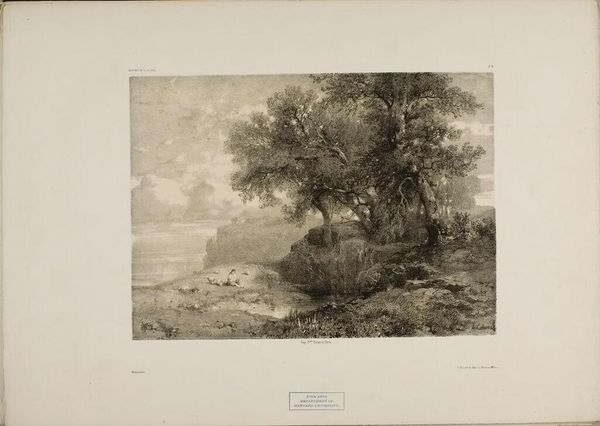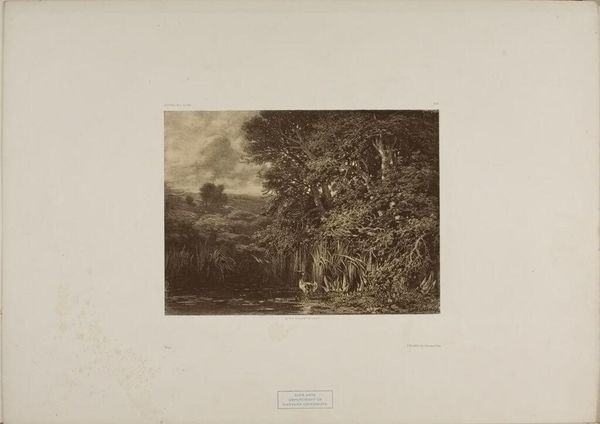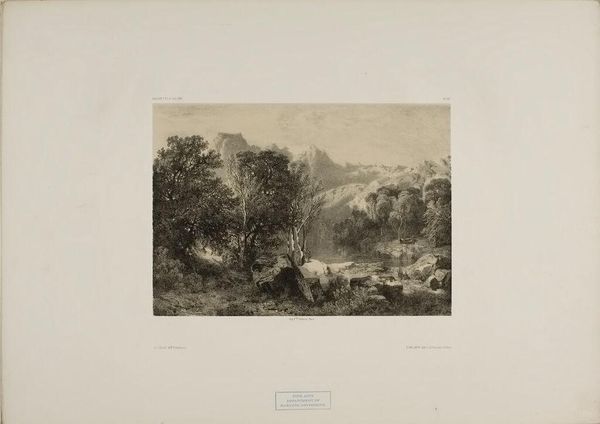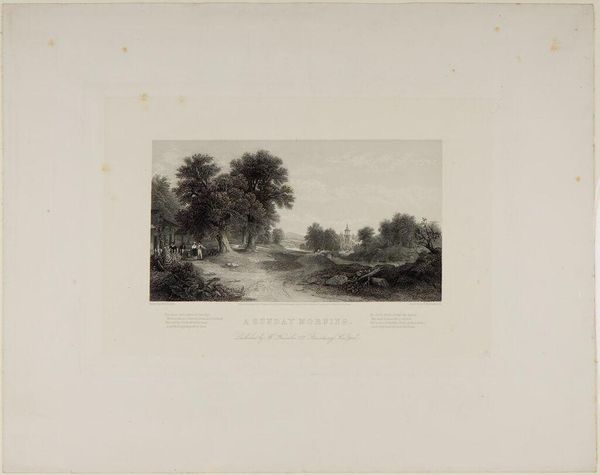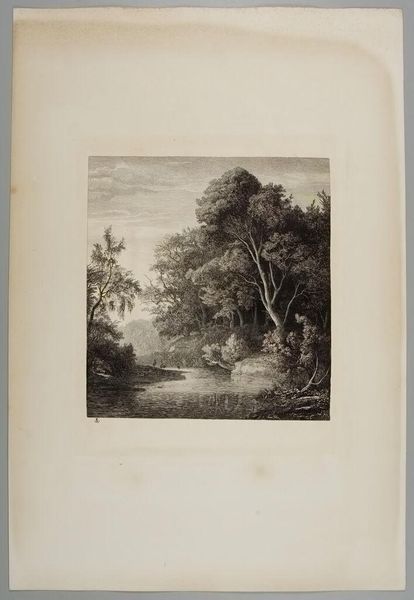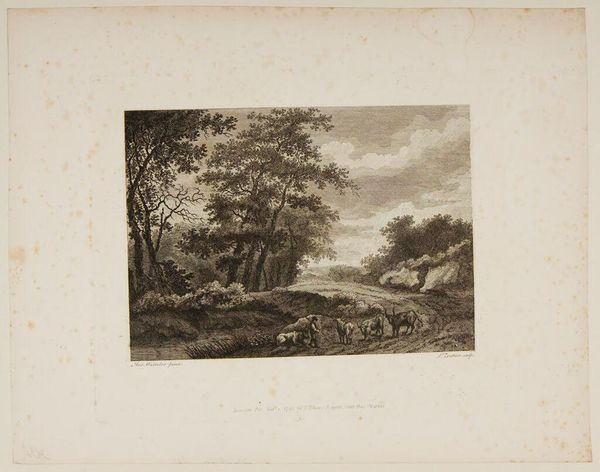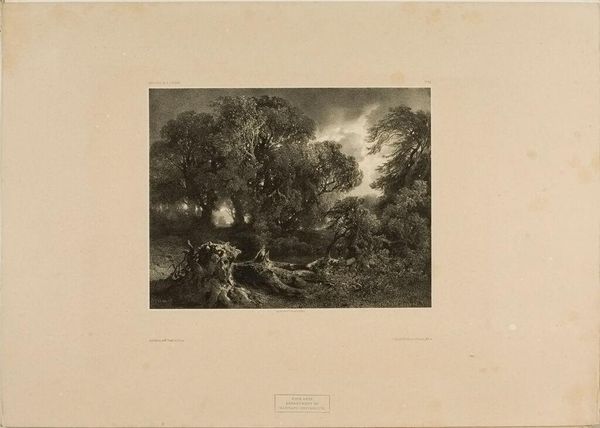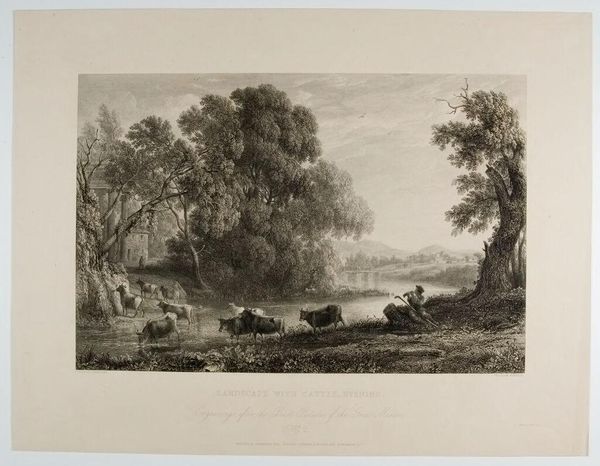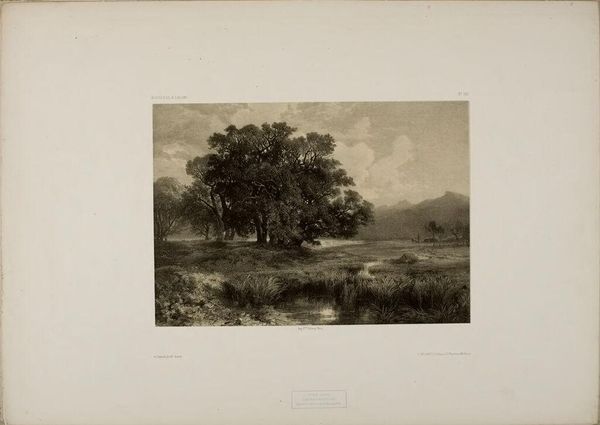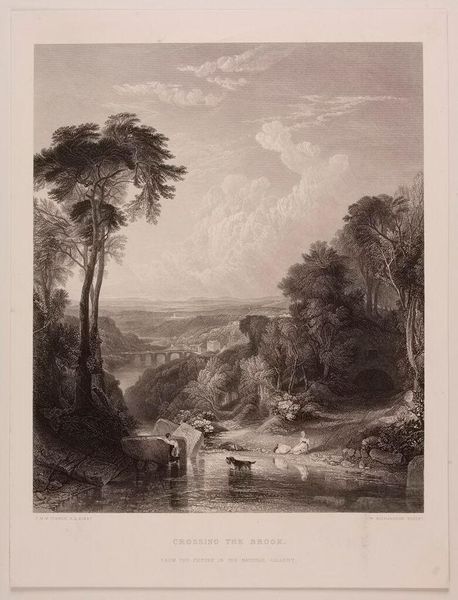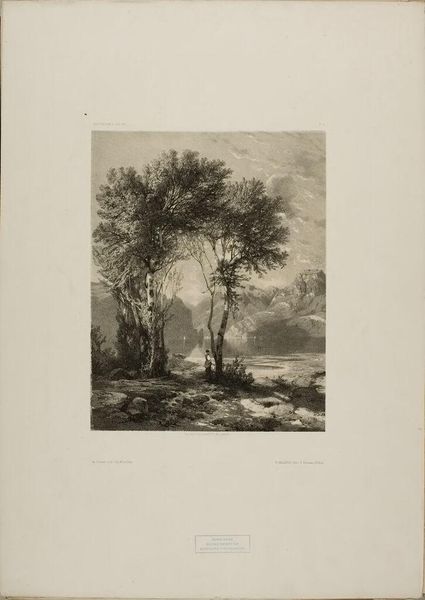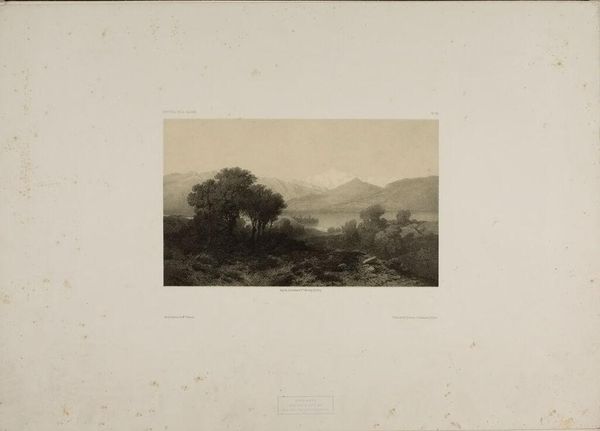
Copyright: CC0 1.0
Curator: Let’s explore "Landscape Number 14" by Alexandre Calame. This monochromatic scene is quite evocative. What strikes you first? Editor: The density of the forest—it feels almost suffocating. The romantic ideal of nature seems to clash with the stark reality of resources and land ownership, especially given Calame's Swiss context. Curator: Absolutely. Swiss landscape paintings were popular commodities. Consider the labor involved in forestry during that era. The wood was a crucial material for building and heating. This print makes me think about the consumption of resources during the 19th century. Editor: And who had access to those resources, both natural and cultural? The sublime, untouched landscape was often a construct of the elite, obscuring the labor and displacement required to maintain it. Curator: Exactly. It's a print—meant to be reproduced and disseminated. It brings the ‘untouched’ landscape into bourgeois homes, divorced from its material origins. Editor: This image, then, becomes a symbol of power and a way to visually participate in the ongoing exploitation and commodification of land. Curator: Precisely, and thinking about the image's production and circulation sheds light on the social and economic forces at play during that period. Editor: I'm left wondering about the tension between the artist's intention and the painting's role in these complex power dynamics.
Comments
No comments
Be the first to comment and join the conversation on the ultimate creative platform.
